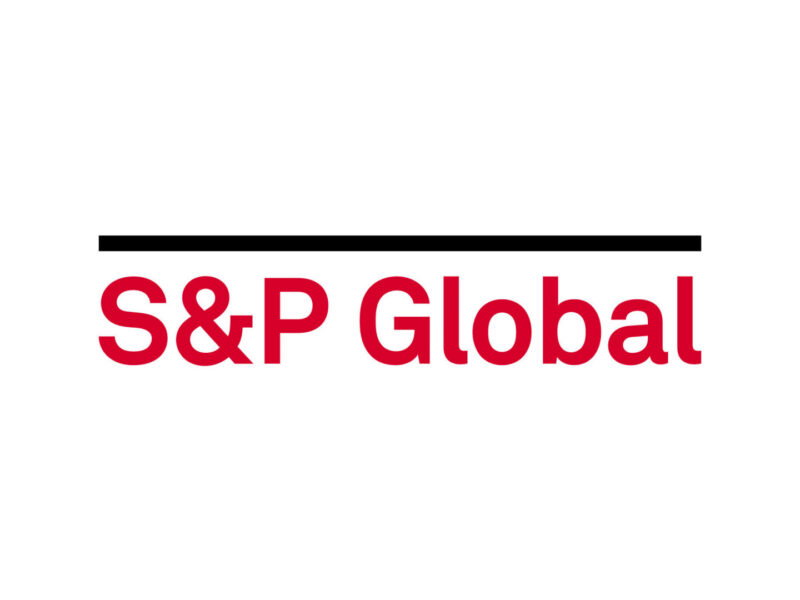Insight & Analysis | Financial Technology & Services (FTS)
Digitization of Banks Remains Resilient

Macro Headwinds to Accelerate Digital Transformation of Regional Banks & Credit Unions
Key Takeaways:
- Despite near-term disruption in the banking world, the industry continues to experience a long-term macro trend of digitization that we expect to continue over the next five years.
- Solution providers in the +$23B1 Bank Technology market offer sophisticated products that financial institutions can deploy at scale to remain nimble, competitive, and customer-first.
- With the right technology, regional banks and credit unions have the potential to compete more effectively with their larger counterparts.
Financial institutions have long recognized the potential of modern technology to enhance both their internal operations and external customer experiences. With a market size of more than $23B, the bank software industry is both established and well positioned for continued growth as customers of all sizes prioritize their digital transformation. In particular, regional banks and credit unions have arguably the most to gain and are embracing next-generation systems to improve operational efficiency, deliver modern personalized experiences to customers, and ultimately level the playing field with larger banks.
Despite recent bank market turmoil, Bank Technology funding is widely viewed as non-discretionary; it is a growing necessity and a key area of focus across these constituents. At THL, we see strong demand for new Bank Technology, continued innovation from solution providers, and promising trends that point to long-term secular growth in the space.
It’s time for more widespread adoption of modern Bank Technology
Banks and credit unions are under increasing pressure to modernize their technology. Legacy, often bespoke, systems and fragmented IT architecture require inefficient manual oversight and ultimately cause frustrating customer experiences. Between increasing competition, digitally native customer expectations, heightened regulation, and ongoing consolidation, financial institutions need scalable, interoperable technology solutions to stay ahead of the game.
“Traditionally, banks have hesitated to replace their legacy core systems for fear of regulatory or customer backlash, but these systems have severe limitations that hamper banks’ ability to create new product structures or innovate,” said Stephen Lantz, Principal, THL. “The good news is, bank executives are aware of their tech debt and many have already launched some sort of digital transformation strategy.”
By the end of 2022, only 11% of banks and 4% of credit unions had not launched a digital transformation strategy.2 But there is still more work to be done:
- The majority of banks are less than 25% through their digital transformation journeys.3
- Only 5% of financial institution executives say they are done or almost done updating their technology.2
From pain points to potential
Key pain points in the current IT architecture of midsize banks and credit unions directly correspond to four of the major Bank Technology categories that we think hold potential: core banking, digital banking, regulatory technology, and lending software.
- Core banking: Modern core banking systems give banks better operational efficiency and streamlined processes, so they can more easily innovate and respond to change.
- Digital banking: Smart digital banking tools allow banks to track and analyze in real time, customer interactions across products and touchpoints, so they can enhance the overall customer experience and deepen existing relationships.
- Regulatory technology: RegTech solutions offer products like automated identity verification, transaction monitoring, and anti-money laundering tools, in addition to compliance-related workflows such as audits, so banks can ease customer and regulatory concerns over identity-related fraud and thefts.
- Lending software: Digitized underwriting, origination, and servicing workflows will streamline and automate key lending processes, so banks can make faster lending decisions, reduce costs, and improve the customer borrowing experience.
“There’s no denying the benefits of next generation technology in banking and lending,” said Madhu Natarajan, Executive Chairman, Odessa. “The digitization of lending is fundamentally changing how loans are accessed and processed, bringing speed, convenience, and expanded credit access to individuals and businesses alike.”
Promising outlook despite concerns over regional banks and CUs
We believe that, despite current concerns that remain about the health of U.S. banks and credit unions, the pace of modern technology adoption in banking will increase in the next few years. On one hand, we’re starting to see stabilization across bank deposits and stocks of regional banks. On the other, we believe that this period of uncertainty may drive additional regulatory requirements and needs for efficiency that Bank Technology providers can support.
Pressures aside, certain trends point to a promising future for Bank Technology:
- Growth amidst consolidation: Despite consolidation in banking, active institutions are healthy and growing. While the total number of financial institutions has declined at a ~3.5% CAGR since 2004, this has been driven by institutions with <$250M in assets. The number of institutions with >$250M in assets has grown by ~1% per year over the same time period.4 Additionally, total assets have actually grown at a 5.0% CAGR and total deposits have grown at a 6.5% CAGR over the same period.1
- Software spending expected to grow: Banks and credit unions typically spend 4-8% of their net revenues on IT per year, totaling about $200B. Spend on third-party software is expected to grow at an 11% CAGR through 2026.1
- Increasing demand for modern technology: Since 2014, there has been a surge in demand for digital banking tools, owed largely to digitally native customer expectations. According to McKinsey & Company, mobile only user bases rose sharply from 19% of customers in 2014 to 76% of customers in 2020.3
“In the near term, we could potentially see sales cycles elongate as banks defer spending on new technology projects,” said Brian Radic, Director, THL. “But in the medium to longer term, we expect financial institutions of all sizes will increasingly leverage modern technology to help them compete with emerging providers and large established banks.”
Long-term secular growth
We anticipate strong, long-term secular growth trends in Bank Technology over the next five years as providers continue innovating with highly scalable and modern solutions.
“In the 25+ years we’ve been investing in fintech, we’ve seen firsthand how modern technology can help financial institutions of all types differentiate,” said Ganesh Rao, Managing Director, and head of the Financial Technology & Services vertical at THL. “As long-term believers in Bank Technology adoption, we think now is a unique time for providers to be excited about adoption of modern tools.”
To learn more about THL’s activity in Bank Technology or other Financial Services sectors, contact our team today:
Ganesh Rao, Managing Director and Head of Financial Technology & Services
Brian Radic, Director, Financial Technology & Services
Stephen Lantz, Principal, Financial Technology & Services
1 Bank Technology Sector Summary. THL. 2023.
2 What’s Going On In Banking 2022: Rebounding from the Revenue Recession. Cornerstone Advisors. 2022.
3 Next-gen Banking systems overview. McKinsey & Company. January 2022.
4 Financial Technology: A Look into the Bank-Tech Market; Opportunities Arise Following Recent Sell-Off. William Blair & Company, L.L.C. April 4, 2023.
THL Insights: Digitization of Banks Remains Resilient
- Verticals
- Financial Technology & Services (FTS)
- ISO
- Bank Technology
- Verticals
- Financial Technology & Services (FTS)
- ISO
- Bank Technology



